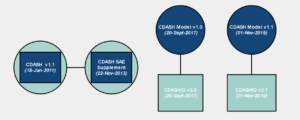This is a very direct sector-dependent terminology. It suggest that is has some conenction to statistics and programming at the same time. This is true, but only partly true. Statistical programming in practice means the preparation of the outputs of the clinical trials (the so called Tables, Listings and Graphs) in majority of the cases with the help of SAS software.
The activity is based on the Protocol, Statistical Analysis Plan, the Table Shell and the associated – ICH or CDISC – guidelines. So it is quite a complex activity. Furthermore as only programmers can understand what is really coded, several programmers have to work on a project to support each other and to be able to provide an efficient quality assurance.
During statistical programming the output templates described in the table shell should be filled with data. Sometimes data has its own will not to obey to the original concept layed in the table shell. It might happen that the plans should be adjusted to the reality so it is a creative activity.
SAS as a program environment has its own rules. It is easy to add a label to a graphs. But it is difficult to write a general function (so called macto) which places the label without covering any other important information.
We at Planimeter have been using SAS Software from the very first moment, that is for 23 years (so far). We collected lots of experiences, built our own program libraries and set-up important SOPs to support both the program and review phases.

